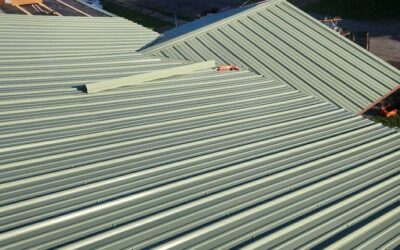4 Things to Expect When Filing an Insurance Claim for Roof Damage
Dealing with roof damage is stressful enough—but navigating the insurance claims process can make it even more overwhelming. If your roof has suffered damage from a storm, hail, or falling debris, you might be wondering what to expect when filing an insurance claim.
Will my insurance cover the cost of repairs? How long does the claims process take? What if my claim is denied?
In this blog, we’ll walk you through four key things to expect when filing an insurance claim for roof damage. Understanding these steps will help you prepare for potential challenges and increase your chances of a successful claim.
1. The Insurance Claim Process Is Long
Filing a Roof Damage Insurance Claim Takes Time
One of the biggest surprises for homeowners is how long the insurance claim process can take. Many expect a quick turnaround, but in reality, it can take weeks—or even months—to complete.
Here’s a general timeline of what to expect:
🔹 Step 1: Assess the Damage (1-3 Days)
Before you file a claim, you’ll need a professional roofing contractor to inspect your roof and document the damage.
🔹 Step 2: File the Claim (1-7 Days)
You contact your insurance provider and submit a claim with supporting evidence, including photos and estimates from a roofing contractor.
🔹 Step 3: Insurance Adjuster Inspection (7-14 Days)
Your insurance company assigns an adjuster to inspect the damage and determine whether your claim is valid.
🔹 Step 4: Claim Decision (2-4 Weeks, or Longer)
After reviewing the adjuster’s report, the insurance company decides whether to approve, partially approve, or deny your claim.
🔹 Step 5: Repairs or Replacement (Varies by Contractor and Weather)
Once approved, you’ll work with your roofing contractor to schedule repairs or a roof replacement.
What Can Delay the Process?
Even in the best-case scenario, the claims process can be slow. Common delays include:
✔️ Backlogged insurance claims after major storms
✔️ Disputes over damage assessments between the adjuster and your roofer
✔️ Slow response times from the insurance company
✔️ Missing documentation or paperwork errors
Because the process can take longer than expected, it’s crucial to file your claim as soon as possible after discovering roof damage.
2. Your Insurance Policy Determines What the Insurance Company Pays
Not All Roof Damage is Covered
Many homeowners assume their insurance will cover all roof repairs, but this isn’t always the case. What your insurance company pays depends entirely on your specific policy and the cause of the damage.
Common Types of Roof Damage Covered by Insurance
✅ Storm Damage (high winds, hail, tornadoes, hurricanes)
✅ Falling Debris (trees, branches, and other heavy objects)
✅ Fire Damage (caused by house fires or nearby wildfires)
✅ Sudden and Accidental Damage (such as damage from a lightning strike)
Types of Roof Damage That May NOT Be Covered
❌ Wear and Tear (normal aging of your roof)
❌ Poor Maintenance (failure to clean gutters, remove debris, or repair minor issues)
❌ Pre-Existing Damage (damage that existed before you got your insurance policy)
❌ Improper Installation (work done by an unqualified contractor)
Actual Cash Value (ACV) vs. Replacement Cost Value (RCV) Policies
Your insurance payout amount depends on whether you have an ACV or RCV policy:
✔️ Replacement Cost Value (RCV): Covers the full cost of replacing your roof, minus your deductible.
✔️ Actual Cash Value (ACV): Covers the cost of your roof after depreciation—meaning you may have to pay a significant portion out of pocket.
Before filing a claim, review your policy to understand what’s covered and how much you can expect to receive.
3. The Insurance Adjuster is the Only One Who Can Approve Your Roof Damage Claim
The Role of the Insurance Adjuster
After you file a claim, your insurance company will send an adjuster to inspect the damage and determine whether your claim is valid. The adjuster’s report is critical—they have the final say in whether your roof damage is covered.
What Does the Adjuster Look For?
🛠 Visible Signs of Storm or Impact Damage (missing shingles, dents, leaks, broken flashing)
🛠 Extent of the Damage (whether a full roof replacement is necessary)
🛠 Signs of Neglect or Wear and Tear (which could disqualify your claim)
Can You Dispute the Adjuster’s Decision?
If the adjuster underestimates your damage or denies your claim unfairly, you have the right to dispute their findings. Here’s what you can do:
✔️ Hire a Roofing Contractor: A professional roofer can provide an independent inspection and report.
✔️ Request a Second Inspection: Some insurance companies allow a second adjuster to review the damage.
✔️ Get a Public Adjuster Involved: A public adjuster is an independent professional who can negotiate with the insurance company on your behalf.
A trustworthy roofing contractor can also assist in this process by providing documentation and evidence to support your claim.
4. There’s a Chance Your Roof Damage Insurance Claim Will Be Denied
Common Reasons for Denied Roof Damage Claims
Even if your roof is damaged, your claim could still be denied. Here are some common reasons:
🚫 The Damage is Considered Normal Wear and Tear
Insurance companies won’t cover roofs that are simply old and deteriorating due to age.
🚫 Your Roof Was Not Properly Maintained
If there’s evidence of poor maintenance (like clogged gutters or moss growth), your claim may be denied.
🚫 The Damage is Not “Sudden” or “Accidental”
Insurance typically covers unexpected damage, not gradual deterioration.
🚫 Your Policy Excludes Certain Types of Damage
Some policies have exclusions for cosmetic damage (such as minor dents from hail) or specific weather events.
🚫 The Adjuster Disagrees with Your Contractor’s Assessment
If your contractor says the damage is severe but the adjuster says it’s minimal, your claim could be denied or only partially covered.
What to Do If Your Claim is Denied
If your claim is denied, don’t panic. You still have options:
✔️ Review Your Denial Letter: The insurance company must provide a reason for the denial.
✔️ Request a Re-Evaluation: Provide additional evidence or a second opinion from a roofing contractor.
✔️ Hire a Public Adjuster: A public adjuster can help you dispute the decision and negotiate a better settlement.
✔️ Consult an Attorney: If you believe your claim was denied unfairly, a legal expert may be able to assist.
Final Thoughts: Be Prepared for the Insurance Claims Process
Filing an insurance claim for roof damage isn’t always straightforward, and there’s no guarantee your claim will be approved. However, understanding the process can help you increase your chances of success.
Key Takeaways:
✔️ The insurance claim process takes time—be patient and document everything.
✔️ Your policy determines what’s covered—review it carefully before filing a claim.
✔️ The adjuster has the final say—but you can dispute their findings if necessary.
✔️ Claims can be denied—so be prepared to fight for a fair settlement if needed.
If you need help with a roof damage claim in Northeast Ohio, S&K Construction and Remodeling LLC is here to assist. As an Owens Corning Preferred Contractor, we provide expert roof inspections and can work with your insurance company to ensure you get the coverage you deserve.
📞 Contact us today for a free roof inspection! 🏠🔨
 (440) 307-2060
(440) 307-2060


